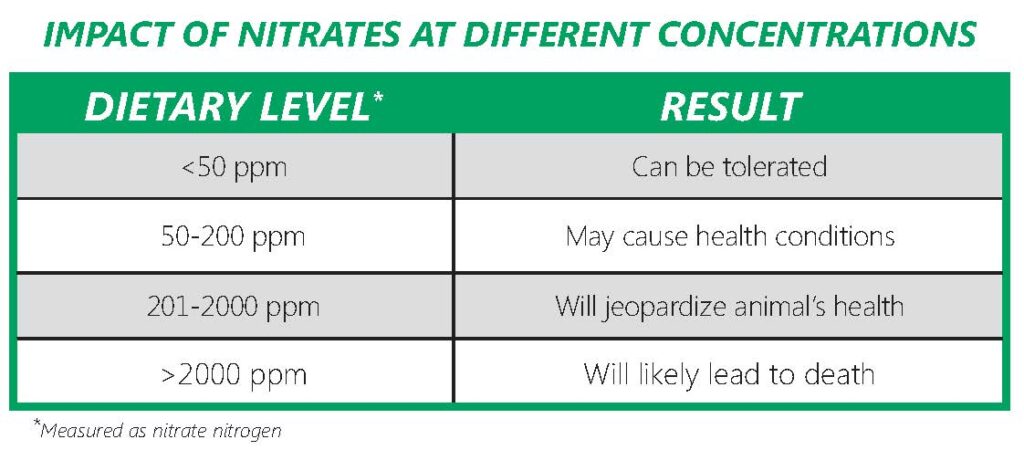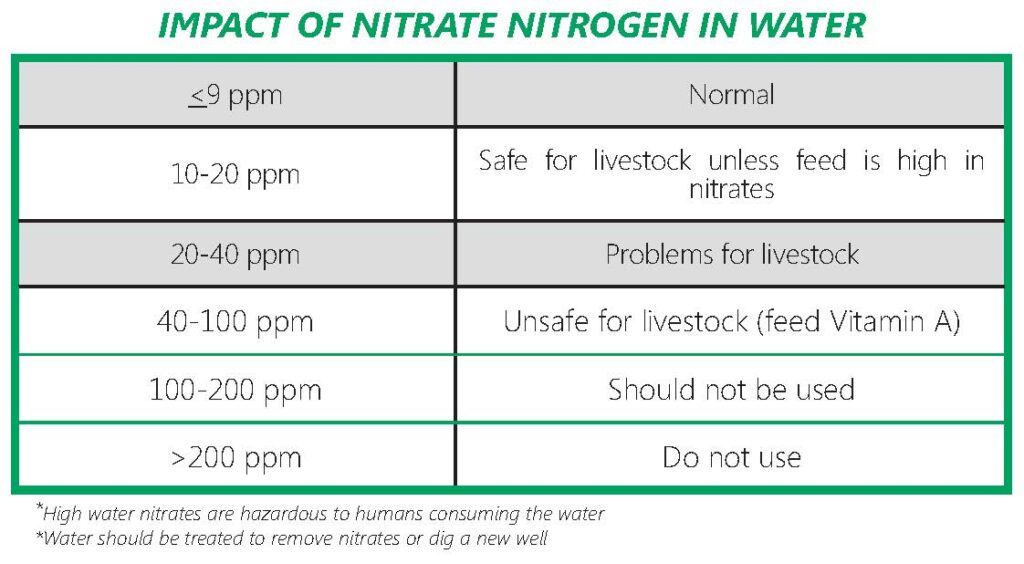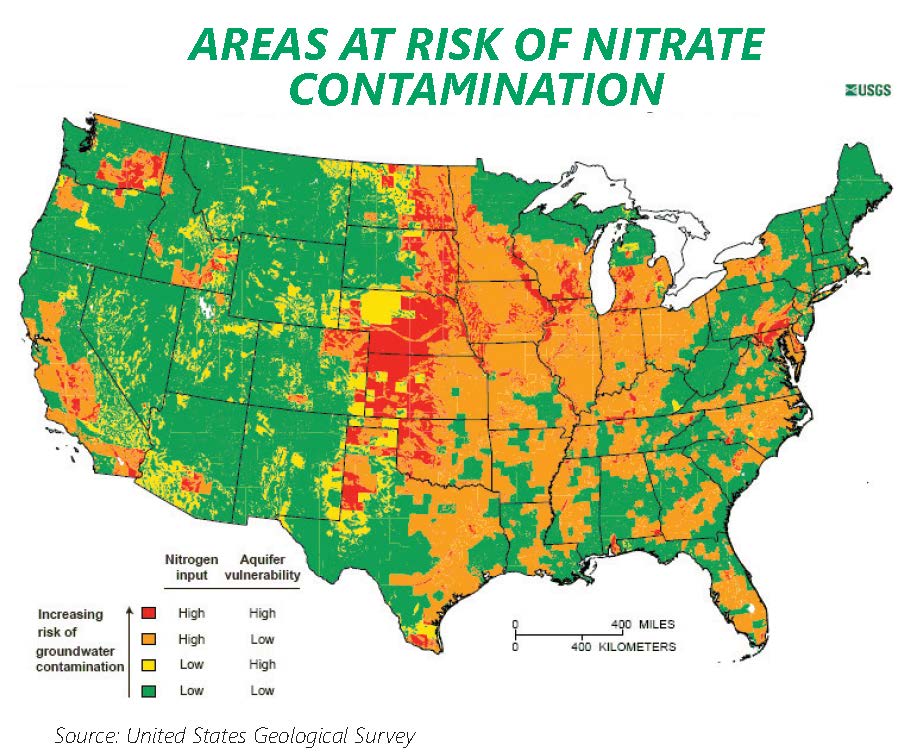
Nitrates and ammonia can be found in forages and either one or both can reduce animal productivity. The oxygen-carrying capacity of the blood is decreased when nitrates bind to the hemoglobin, forming methemoglobin. Low blood oxygen inhibits cellular and energy metabolism by the cells. Ammonia increases blood pH, can reduce feed intake, wastes energy and affects overall health. Agri-King’s Micro XX® helps with managing nitrate and ammonia issues and should be fed in those situations when forages have issues concerning nitrates and/or ammonia.

Nitrates/NitritesField:
– Accumulate in plants due to nitrogen application and/or drought.
– Nitrates can be used to synthesize plant protein.
– Fermentation (e.g. corn silage) can reduce nitrate concentration.
Water:
– Nitrates leach through the soil and can enter ground/well water.
– Shallow wells can have the highest concentration of nitrates.
Rumen/Blood:
– Rumen bacteria convert: nitrates→ nitrites→ ammonia→ bacterial amino acids→ bacterial protein
– Nitrites (more toxic than nitrates) accumulate faster than ammonia leading to nitrite accumulation in the blood and the formation of methemoglobin.

Interpreting Lab Analysis for Nitrates
Some laboratories test for nitrate-nitrogen (Analab), while other laboratories test for total nitrates. When comparing values between laboratories, it is important to know how results are reported. The following conversions are to be used to compare results from one lab to another.
– Nitrate nitrogen X 4.4 = total nitrates
– Total nitrates / 4.4 = nitrate nitrogen
Ammonia
Forage:
– Increases in ensiled feeds due to clostridial fermentation which breaks down plant proteins.
Rumen/Blood:
– Enters the rumen directly from the forage fed.
– Produced in the rumen from microbial degradation of soluble nitrogen (e.g. urea) and nitrates.

– Used as a source of nitrogen by rumen bacteria (for bacterial protein synthesis) in the rumen.
– Once absorbed, increases blood pH (metabolic alkalosis) reducing performance, breeding, and intakes while affecting hoof integrity and health.
Conclusions

Levels of nitrates and ammonia can be high in the water supply and/or forages fed to ruminants. Agri-King’s Micro XX® product should be fed to help alleviate any ill effects encountered by ruminants when fed high nitrate and/or ammonia water and forages. If nitrates and/or ammonia are extremely high in a forage the best approach might be to reduce the amount of that forage fed in the diet. There may be times when the forage should be removed altogether. Water containing high nitrates should be treated with an appropriate water treatment system or a new well dug. For more information regarding Micro XX®, contact your local Agri-King Area Manager. AK